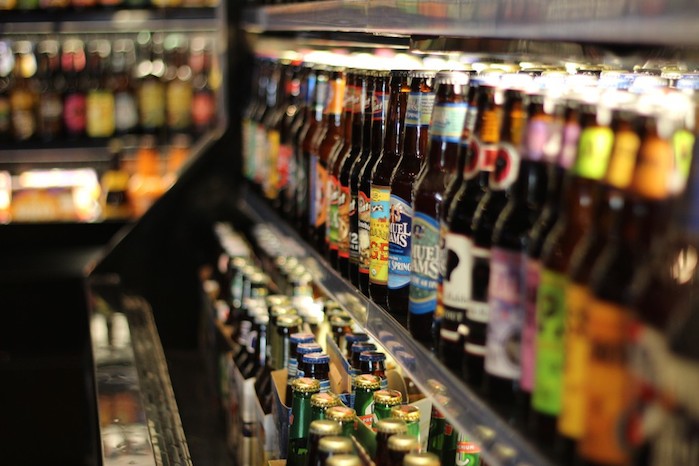Is craft beer slowing down?
Technically the category remained in growth mode in 2016, expanding 6% to 295.723 million 2.25-gallon cases, according to the forthcoming 2017 Beer Handbook from the Beverage Information Group. That makes craft the third largest beer category, behind only light and premium/super premium. The craft category also surpassed a 10% market share for the first time ever, reaching 10.4%, which was up from 9.8% in 2015.
That’s all good news. The bad? Those numbers represent slowed growth. The category was up 8.5% in 2015. The year before that it was around 13%.
The craft explosion is gradually losing steam.
How come? Probably because consumers these days (especially those darn fickle Millennials) have increasingly diverse tastes. Or ADD palates. Whatever you want to call it, people like to experiment broadly and disloyally across brands and categories. A drinker who enjoys craft beer one day may want a whiskey the next, and then a wine later in the week. As category crossover becomes common, even a red-hot commodity like craft beer will see sales slip.
Just don’t tell that to the category’s investors and producers. The number of regional breweries, microbreweries and brewpubs in America eclipsed 5,000 for the first time ever last year, topping off at 5,234. There were as few as 1,986 as recently as 2011.
The current craft beer craze began to gain steam around 2010, when the country added 163 breweries. Afterwards, moving forward year-by-year, the annual new openings totaled 314, 462, 532, 881, 844, and 825 last year.
Many people understandably want in on this growing industry. But for how long will the market remain so robust?
Big Brands Grow, Shrink
Last year was a mixed bag for the bigger craft brands.
Ironically, many of those that helped jumpstart the category a decade ago have since suffered for their success. As more microbreweries open and consumers turn towards whatever’s newest and most local, the large and longstanding brands have lost customers.
Like the grandfather of craft beer, Samuel Adams Boston Lager. Once upon a time, the beer and its brand were the faces of the burgeoning craft moment. Now they represent what could seriously damage the category: consumers splintering off and experimenting around the innumerable amount of smaller craft options. Brand loyalty is dead. Samuel Adams Boston Lager remained the top-selling craft beer with 14.180 million cases, but was down 10.3% in 2016. The brand has not fared much better in 2017.
Other category stalwarts can understand the pain. The second-highest seller and fellow industry-setting brand, Sierra Nevada Pale Ale, saw sales decline 6.5% to 11.054 million cases. Elsewhere in the top ten, the veteran brew Shiner Bock fell 9%, Fat Tire Amber Ale was down 2.9%, Torpedo Extra IPA slipped 3%, Samuel Adams Rebel IPA was -14.9% and Widmer Hefeweizen was down 4.5%.
But for every top brand that slipped in 2016, there was another there to pick up the slack.
Goose Island, backed by the marketing machine of its owner AB-InBev, continued its recent ascension with +22.4% to finish in third place with 7.995 million cases. Lagunitas IPA, fully bought out by Heineken in 2017, rounded out the top 5 with a +17.1% for 6.955 million cases. Among other top brands, Ballast Point Sculpin American IPA, from the brewery Constellation Brands bought in 2015 for $1 billion, was again in growth, with +15.2% for 1.521 million cases.
The theme from those breweries is that it pays for Big Beer to buy micro. The shopping spree continued in 2016, as macro companies scooped up a litany of smaller breweries. AB InBev helped itself to Devil’s Backbone, Karbach, Breckenridge and Four Peaks. MillerCoors responded with Terrapin, Revolver and Hop Valley.
What exactly the Big Beer takeover means for the future of craft remains to be seen. While there is some rancor among beer bloggers and craft producers on the internet, American consumers overall do not appear as outraged at the thought of corporations owing microbreweries. The consistently rising sales of Goose Island, Lagunitas and Ballast Point attest to that.
Microbreweries Expand
Most growth in craft beer last year actually was outside of the leading brands, which altogether registered merely a +0.2% for 72.920 million total cases. Other craft brands — that vast amount of regional, micro, and brewpubs — accounted for 222.803 million cases sold and 8% growth.
Why do the little guys represent so much? Remember: many craft beer drinkers only want whatever is new and hot. Retailers report that some customers try never to drink the same beer twice. Why would you, when there’s an almost inconceivable array of variety and quality out there now for craft beer? Look for consumers to continue guzzling down local, fresh, trendy beers.
At what point that consumer taste and buying spree reach a breaking point, however, is anyone’s guess. Although craft continues to expand, there are certainly storm clouds on the horizon. The category may be approaching a saturation point. Even as the number of craft producers explodes, craft beer has slowed in growth.
Kyle Swartz is managing editor of Beverage Dynamics magazine. Reach him at kswartz@epgmediallc.com or on Twitter @kswartzz. Read his recent piece 10 Alcohol Trends to Watch in 2017-18.









